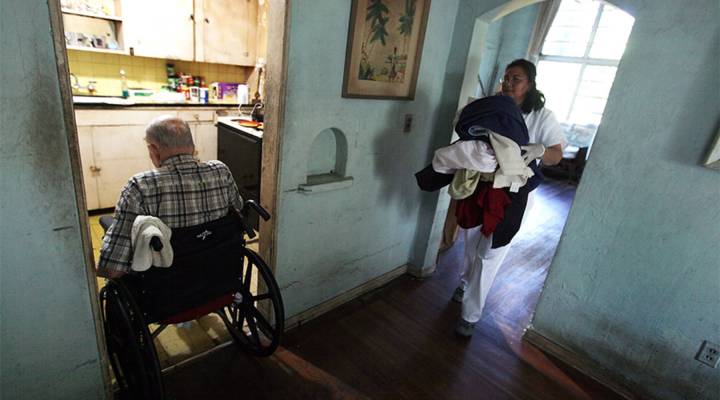
COVID-19 adds more challenges to overtaxed elder care system
COVID-19 adds more challenges to overtaxed elder care system

Even before the pandemic, America’s elder care system was understaffed and underfinanced. Now because of the pandemic, that system is in even more trouble. For more on what all this has done to the economics of long-term care in America, Marketplace Morning Report checked in with senior economics contributor Chris Farrell.
Kimberly Adams: So why was the virus a perfect storm for elder care facilities?
Chris Farrell: Well, residents are frail and they’re usually coping with multiple medical conditions and living in crowded facilities. And the other thing is low-wage caregivers, they often work at multiple locations to stitch together a living, and that hikes the odds of exposure to the virus. By the way, the impact of this pandemic extends beyond nursing homes to the wider ecosystem of senior living centers and senior care facilities.
Adams: Not to mention the friends, family and others going in and out before these facilities were in lockdown. Now, a simple question with what I’m guessing is a complicated answer: Who pays for long-term care?
Farrell: Traditional Medicare doesn’t pay for long-term care. Medicaid, which is the joint federal state program, that’s the main public option for long-term care services – and qualifying for Medicaid that usually requires destitution, assisted living, continuing care communities and the like, they’re so-called private pay.
Adams: What’s the outlook for this industry right now?
Farrell: Simply put, revenues are heading lower, costs are going up. You know, for one thing, after this recent experience, families are reluctant to put aging parents into crowded facilities. And for another, it’s just become a lot more expensive to run nursing homes and assisted living centers. Managers are paying more for safety and staff. According to a report from Pew, nursing homes and assisted living facilities were short staffed before the coronavirus. It’s even harder now to recruit and retain nurses and train staff. To give you just one indication, Brookdale Senior Living. It operates over 800 senior care, senior living communities. In a recent earnings call, management said it had spent $10 million in the first quarter on its COVID-19 response.
Adams: Is there any kind of consensus among experts on what needs to be done to address some of these issues?
Farrell: Everyone I have talked to agrees that a key reform, a critical step, is improving the pay and the working conditions of staff and personal care workers. These are low-wage jobs, but they aren’t low skill. Howard Gleckman of the Urban Institute captured how little value we put on their work: The median hourly wage for facility-based certified nursing assistant is still a little over $13 an hour. Compare that to the median $17 wage of vet technicians. The economic message, says Gleckman: We’ve put a higher value on those who care for our cats than who care for our mothers.
There’s a lot happening in the world. Through it all, Marketplace is here for you.
You rely on Marketplace to break down the world’s events and tell you how it affects you in a fact-based, approachable way. We rely on your financial support to keep making that possible.
Your donation today powers the independent journalism that you rely on. For just $5/month, you can help sustain Marketplace so we can keep reporting on the things that matter to you.

















